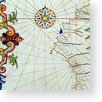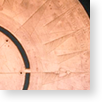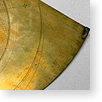Having consolidated their power over Tuscany, the Medici turned their gaze toward the sea, hoping to win a place in oceanic navigation and develop trade with the East and West Indies. These ambitions favoured the development of maritime science in Tuscany, making Leghorn a major centre in the Mediterranean, equipped with arsenals, naval shipyards, nautical schools and workshops for the production of nautical instruments and geographical charts, destined mainly for the captains of the Medicean fleet, the Knights of St. Stephen. The entry of the English Admiral, Sir Robert Dudley, into the service of Ferdinando I marked the consolidation of nautical science at the Medicean court. His important collection of nautical instruments, displayed in this room, along with his imposing treatise on the art of navigation, Dell'arcano del mare (The Secrets of the Sea), published in Florence in 1646-1647, became part of the Medicean collection.
Nautical Atlases
The portolans of Bartolomeu Velho († 1586) and Lopo Homem (16th century) are part of the cartographic material, mainly Portuguese, that Cosimo I de' Medici ...
(4 objects)
Robert Dudley’s Instruments
With the experience acquired in years of navigation, the English Admiral Sir Robert Dudley (1573-1649) assumed a leading role in the promotion of Medicean ...
(20 objects)
The Problem of Longitude
The quest for longitude was the most crucial problem in the art of navigation, often determining the success of voyages and the survival of seamen. In ...












